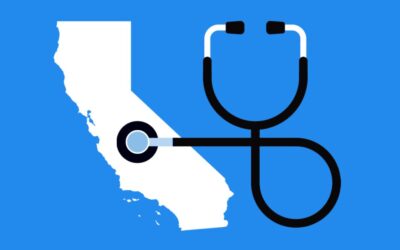
Is Covered California based on Gross Income or Net Income?
One of the most frequent questions posed by Californians looking to enroll in a health insurance plan through Covered California is whether the system uses gross income or net income to determine eligibility and premium costs. To put it plainly: Covered California uses neither gross income nor net income. Instead, it relies on Modified Adjusted Gross Income (MAGI) as the basis for its calculations.
Official Guidelines and Documents
According to Covered California’s official guidelines, “Your Modified Adjusted Gross Income is your Adjusted Gross Income (found on your tax return) plus any tax-exempt Social Security, tax-exempt interest, and tax-exempt foreign income you have.”
This is further supported by federal regulations under the Affordable Care Act, which specifies MAGI as the income measurement for healthcare marketplaces. For more detail, you can consult the IRS guidelines on MAGI in the context of the Affordable Care Act, specifically in IRS Publication 974.
Why Not Gross or Net?
As explored in our previous section, gross and net income are simpler calculations that may not take into account various forms of income and certain deductions that can influence your ability to afford healthcare. MAGI, on the other hand, provides a more comprehensive and equitable measurement of your financial resources. This is why Covered California, in line with federal guidelines, opts for MAGI rather than gross or net income for determinations related to eligibility and financial assistance.
Why Does Covered California Use Modified Adjusted Gross Income (MAGI) and How Does It Differ from Gross and Net Income?
The Importance of MAGI in Covered California
When determining eligibility for premium tax credits and cost-sharing reductions, Covered California uses a specific financial metric known as Modified Adjusted Gross Income, or MAGI. Understanding MAGI is critical because it’s the yardstick by which financial assistance is measured and granted. But what exactly is MAGI, and how does it differ from gross and net income?
What is Gross Income?
Gross income is the total income you earn in a year before any deductions or taxes are taken out. This can include wages, salary, tips, bonuses, rents, interest income, and any other form of financial gain. For many people, especially those who don’t own businesses or have multiple sources of income, gross income can usually be found on one’s W-2 form or initial tax documents.
What is Net Income?
Net income, on the other hand, is what’s left after all deductions, taxes, and additional expenses have been subtracted from your gross income. In essence, it’s the amount of money that actually makes it into your bank account and is available for you to spend. For individual consumers, this often means the income that’s left after things like income tax, Social Security contributions, and Medicare contributions have been deducted.
The Role of Modified Adjusted Gross Income (MAGI)
MAGI starts with your Adjusted Gross Income (AGI), a figure found on your tax return. AGI includes not just employment income but also additional income streams such as social security benefits, alimony received, and business income, minus certain “above-the-line” adjustments like student loan interest, alimony paid, and contributions to certain retirement accounts.
The “Modified” part comes in when you add back specific deductions, such as:
- Non-taxable Social Security benefits
- Tax-exempt interest
- Foreign income that is excluded from U.S. taxes
By using MAGI, Covered California aims for a more comprehensive view of an individual’s financial status, which allows for a more equitable distribution of subsidies and assistance.
Why MAGI?
The use of MAGI as opposed to gross or net income helps create a level playing field, ensuring that financial evaluations are as equitable as possible. It takes into consideration various forms of income and adjusts for certain deductions, making it a more nuanced metric for determining eligibility for financial assistance.

Who is Affected the Most?
The Far-Reaching Impact of Income Calculation
Understanding whether Covered California uses gross income, net income, or Modified Adjusted Gross Income (MAGI) isn’t just a matter of academic interest. It has real-world implications that could profoundly affect certain groups of people more than others. Let’s explore some scenarios and examples to illuminate who could be most impacted by the specific use of MAGI in Covered California’s calculations.
The Self-Employed Individual
People who are self-employed often have a variety of business expenses and deductions that significantly lower their net income compared to their gross income. If Covered California were to use net income, this group might appear poorer on paper than they might actually be, possibly qualifying for subsidies they don’t necessarily need. Using MAGI, which adds back certain deductions, offers a more accurate picture of their financial standing.
Retirees with Tax-Exempt Income
Many retirees receive Social Security benefits, some of which may be non-taxable depending on their overall income. If only net or gross income were considered, this significant income source could be left out, leading to miscalculations in subsidies or cost-sharing benefits. MAGI accounts for non-taxable Social Security income, ensuring a more accurate assessment for retirees.
Individuals with Investment Income
For people with significant investment income, such as capital gains or dividends, the use of net income might not capture these additional resources effectively. MAGI includes these forms of income, which can be a critical factor in determining both eligibility and the level of financial assistance.
Families with Mixed Income Streams
Families often have multiple sources of income, including wages, small business income, and perhaps even some freelance work. The intricacies of how each of these is taxed and what expenses are deducted can complicate the picture significantly. Using MAGI standardizes this, ensuring that all forms of income are considered when determining eligibility and calculating subsidies.
College Students
Students often have low gross incomes and even lower net incomes due to education-related deductions, such as tuition and fees or student loan interest payments. By using MAGI, Covered California can add back these deductions to arrive at a more accurate representation of a student’s financial resources.
Ultimately,
The use of MAGI in Covered California’s income calculations ensures a more nuanced and comprehensive assessment of an individual’s or family’s financial situation. This method most significantly impacts self-employed individuals, retirees, people with investment income, families with mixed income streams, and college students. Understanding this can not only help you gauge your own situation better but also sheds light on the broader implications of Covered California’s income-based approach to healthcare coverage.

FAQs (Frequently Asked Questions)
Navigating the Complexities of Income and Covered California
The topic of income calculation, particularly in relation to Covered California, often comes with a host of questions. To make it easier to understand, let’s tackle some of the most frequently asked questions on this subject.
Q1: What is Modified Adjusted Gross Income (MAGI)?
Answer: MAGI starts with your Adjusted Gross Income (AGI), which is your total income minus certain deductions. To this, you add back specific non-taxable income, such as non-taxable Social Security benefits, tax-exempt interest, and tax-exempt foreign income. Covered California uses MAGI to determine eligibility for subsidies and premium costs.
Q2: How do I calculate my MAGI?
Answer: To calculate MAGI, you’ll need to start with your AGI, which can be found on your tax return. Then, you add back any non-taxable Social Security income, tax-exempt interest, and tax-exempt foreign income.
Q3: Can I use last year’s income to calculate my MAGI?
Answer: While last year’s income can provide a general idea, it’s important to use the most current information available. Changes in your income or deductions can affect your eligibility for financial assistance.
Q4: Does unemployment income count towards my MAGI?
Answer: Yes, unemployment compensation is generally considered taxable income and is therefore included in your MAGI.
Q5: I have a small business. How does that affect my MAGI?
Answer: Business income, after business expenses, is considered part of your AGI. However, certain business-related deductions may be added back when calculating MAGI. It’s advisable to consult a tax advisor for a comprehensive understanding.
Q6: Will my premium change if my income changes?
Answer: Yes, a significant change in income can affect your eligibility for subsidies, which in turn could impact your premium. It’s important to report any income changes to Covered California as soon as possible.
Q7: Do child support payments affect my MAGI?
Answer: Child support payments received are not included in MAGI. Likewise, child support payments you make are not deductible from your MAGI.
Q8: What about gifts and inheritance?
Answer: Generally, gifts and inheritances are not considered taxable income and therefore do not impact your MAGI.
Q9: Is rental income included in MAGI?
Answer: Yes, rental income is part of your AGI and therefore is included in your MAGI calculation, after accounting for any allowable expenses.
Q10: Who can help me calculate my MAGI accurately?
Answer: Tax professionals, financial advisors, and certain online calculators can assist you in calculating your MAGI accurately.
In Summary
Understanding how income is calculated in relation to Covered California can be complex, but it’s crucial for making informed decisions about your healthcare coverage. We hope this FAQ section clears up some of the most common questions you might have. For more specific guidance, contact our Enrollment Center at (888) 280-0763














































